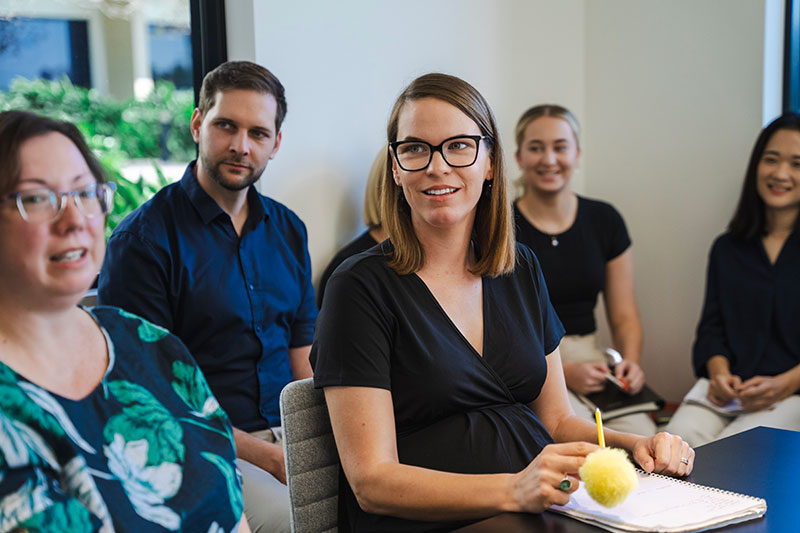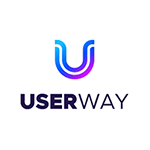About 1 in 6 Australians (4.4. million people) live with disability. That’s a big audience – and it’s overlooked by many businesses. Some disabilities are obvious but many are hidden.
Too often, our society creates unnecessary barriers – such as inaccessible websites. With the right consideration and support, people with disabilities can be empowered to participate.
Accessible and inclusive marketing refers to the practice of creating marketing campaigns, materials, and strategies that are designed to reach and engage a wide range of individuals, including those with disabilities, diverse backgrounds, and varying needs.
The goal is to remove barriers and ensure that everyone, regardless of their abilities or characteristics, can easily access and understand marketing content, products, and services.

of people with disability use a wheelchair

have hearing loss

may be living with blindness or low vision by 2030
By adopting accessible and inclusive marketing practices, businesses can expand their reach, elevate customer satisfaction, and proudly demonstrate their unwavering commitment to diversity and inclusion.
Ellie Bakker, CEO Splice Marketing
You’re helping to create a better, more welcoming society. And you’re also powering your business growth by ensuring that your message reaches and engages as many people as possible.
If you’ve never considered accessibility and inclusivity before, it may seem a daunting prospect. There’s a lot of technical jargon, widgets, plugins and standards.
We can help. The Splice Marketing team has considerable in-house expertise in this area. We regularly train and upskill team members as part of professional development. And we never lose sight of the people we’re doing this for.
With Splice Marketing, you benefit from:
Over the last few years, we’ve developed our own website and marketing materials to be more accessible and inclusive. We’ve walked the path you’re about to embark on and are happy to share our experience.

It’s important to recognise that you may not always have all the answers or get it right initially. What truly matters is a genuine commitment to continuous improvement and an openness to feedback from employees, customers, and stakeholders.
The W3C standards and guidelines set out best practice in designing accessible websites for people with disabilities.
An AAA rating is the top tier. Few organisations achieve this. Many organisations focused on people with disabilities gain an AA rating.
The first rung on the ladder is the A rating. This is well worth gaining. It represents an important step towards greater inclusion and accessibility.
By embracing a learning mindset and seeking input from diverse perspectives, businesses can make meaningful progress, benefiting everyone involved.
Consider how you use your website. What if you couldn’t see the words? What if you couldn’t hear the videos? What if you couldn’t use your mouse to navigate?
Accessible website design addresses these (and many other) aspects of your website to ensure that people with disabilities can use it as easily as anyone else.
Accessible website design may mean:

With 77% of patients turning to Google to research pain points and health conditions before picking up the phone to their doctor, it is vitally important you have a website that is easily found and accessible to your patients.
Your website needs to be not only visually appealing but easy to use, informative and SEO friendly so that you can be found!
With all digital marketing strategies, your website is ultimately where you are trying to drive all your traffic. It gives your business credibility and allows you to tell patients why they should trust you, and provide valuable health-related information around the clock.

We go above and beyond with our e-commerce website designs by:
If you want your website to attract new patients/clients and position your favourably in the market, then your website needs to answer all these common questions and to be an accurate reflection of your bricks and mortar practice/business. If it’s not, perhaps it’s time for a new website!
You’re on the Splice Marketing website right now.
On the right side of your screen, you should see an icon of a white person in a green circle. Click on it and it’ll open the UserWay tool which will allow you to adjust things like font size and colour contrast.

The world is a beautifully diverse place and yet, too easily, we only reflect our little part of it.
Inclusive marketing is a deliberate effort to represent a wider range of people in your marketing.
If you serve a broad, general audience, then your imagery should ensure that everyone feels represented and included. That means featuring people from various racial, ethnic, and cultural backgrounds, different age groups, genders, sexual orientations and abilities.
Your language matters too. Many people have low literacy levels and many of our common terms can unintentionally confuse or exclude people.
There’s no better time than now to start improving accessibility and inclusivity in your business. It’s vitally important for your potential clients and for your business growth.
Splice Marketing can help you explore where to start, what terminology to use and which tools might help. We’ll tailor our advice to your business goals, audience and budget. With our help, the process becomes less daunting and more exciting.

Our regular newsletters are the ideal way to build your marketing knowledge and grow your healthcare business.